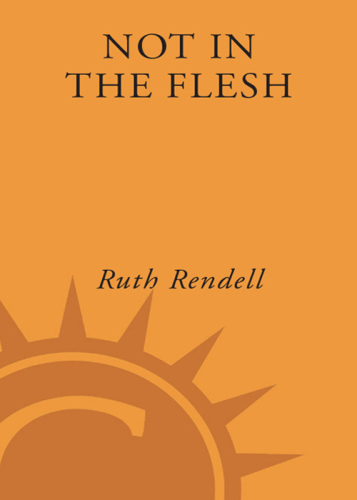
Not in the Flesh
Chief Inspector Wexford Mystery Series, Book 21
کتاب های مرتبط
- اطلاعات
- نقد و بررسی
- دیدگاه کاربران
نقد و بررسی

June 2, 2008
In bestseller Rendell's superb 21st Inspector Wexford mystery (after 2005's "End in Tears"), the British police detective investigates first one, then two male bodies that turn up on the old Grimble property in the insular hamlet of Flagford. Who were these men? Are their deaths related? Older people fill this wise and nuanced storysleepy, bitter and disengagedsince no current crime is at stake, just these two literal skeletons from the past. Among the suspects in the bizarre case are dying fantasy novelist Owen Tredown, who lives with two loopy women, Claudia and Maeve, his divorced first and second wives, in a hideous Victorian manor. Outside groupsincluding members of the Somali community and itinerant fruit-pickerstantalize with their secrets and idiosyncrasies. The suspense persists until the book's final sentences, when the last pieces of the puzzle click elegantly yet unexpectedly into place. "(June)" .

Starred review from September 29, 2008
In addition to solving two long-ago murders, Chief Inspector Wexford is troubled by female genital mutilation in the local Somali community. The temptation would be to cut the subplot, but this abridgment retains the richness of the novel. Tim Curry's performance is splendid, even better than Daniel Gerroll's excellent performance of Rendell's End in Tears
. Curry does a particularly marvelous job with the minor characters, such as the two wives-in-law of a local author, who cackle at the sexual innuendos of their own jokes. Then there's 84-year-old Irene McNeil, alternately supercilious and weepy. Throw in the obsessive Grimbles, on whose land the bodies were found; some migrant fruit-picking Roma; Wexford's family; Somali immigrants; and Curry somehow sounds like a full-cast audio. If only Wexford sounded less like his assistant Burden, the performance would be absolutely perfect. A Crown hardcover (reviewed online).

April 15, 2008
The prolific Rendell (or Barbara Vine, depending on what you're reading) offers her 21st Chief Inspector Wexford novel. Readers watch as a truffle-hunting suburbanite and his dog stumble across a long-buried body on a vacant property. Upon investigation, Wexford and his team uncover a second murder victim in the basement of the abandoned house on the property. The crimes were committed so long ago that the bodies themselves yield few clues, but the neighbors all seem to have reasons to be cast in a suspicious light. Wexford embarks on an arduous probe in an effort to unravel the mystery, encountering along the way the usual odd assortment of characters. Interspersed in his investigation is an odd subplot involving the genital mutilation of young Somali immigrants in Britain. As always, Wexford endures modern (and in his opinion, less civilized) British society and patiently prods his suspects until they reveal all. Not quite as compelling in tone as some of Rendell's other works but complex enough to satisfy any mystery fan. Recommended for all public libraries.Caroline Mann, Univ. of Portland Lib., OR
Copyright 2008 Library Journal, LLC Used with permission.

March 15, 2008
Rendell, winner of three Edgar Awards, has two primary approaches in her acclaimed crime fiction: edgy novels of psychological suspense and more traditional police procedurals starring Chief Inspector Wexford of Kingsmarkham, Sussex. Where Rendells suspense can leave the reader deliciously unsettled, the Wexford novels place the reader on solid, sometimes overly familiar, ground. For example, Rendell overrelies on the old see who cracks when the police visit convention, using the questioning of witnesses/suspects in their homes as a launch pad for scathing comments on home decor and the occupants physical attributesafter the fourth or fifth visit, the formula starts to creak. But Rendell works feverishly within the form to deliver some surprises, starting here with the discovery of a human hand by a dog trained to hunt for truffles in the woods. The remains, according to the pathologist, have been buried for almost a decade. Wexford centers his investigation on the owners of the land where the hand was found, a contentious couple, greatly caught up in land disputes. When a second body is found in a basement wood pile, the action takes off. Rendell keeps the suspense going nicely, even if Wexford remains something of a cardboard character, and the procedure is mostly rooted in the past. For devoted fans of the series, of whom there are many, this will be much anticipated and, as always, satisfying; for others, only so-so.(Reprinted with permission of Booklist, copyright 2008, American Library Association.)

























دیدگاه کاربران